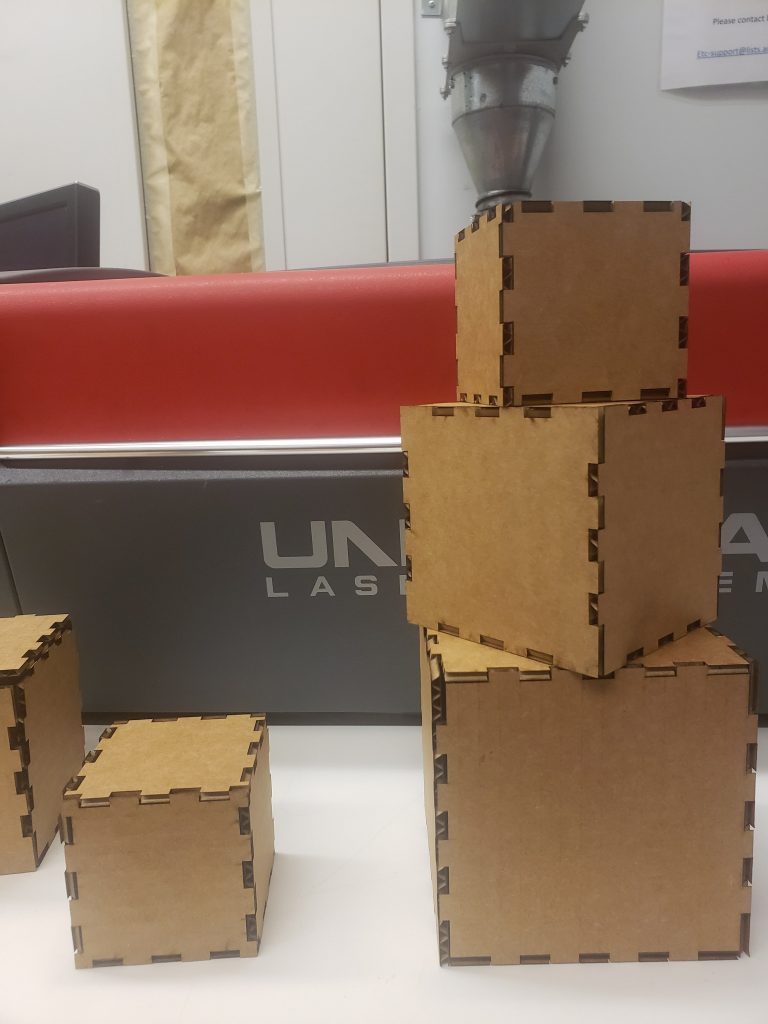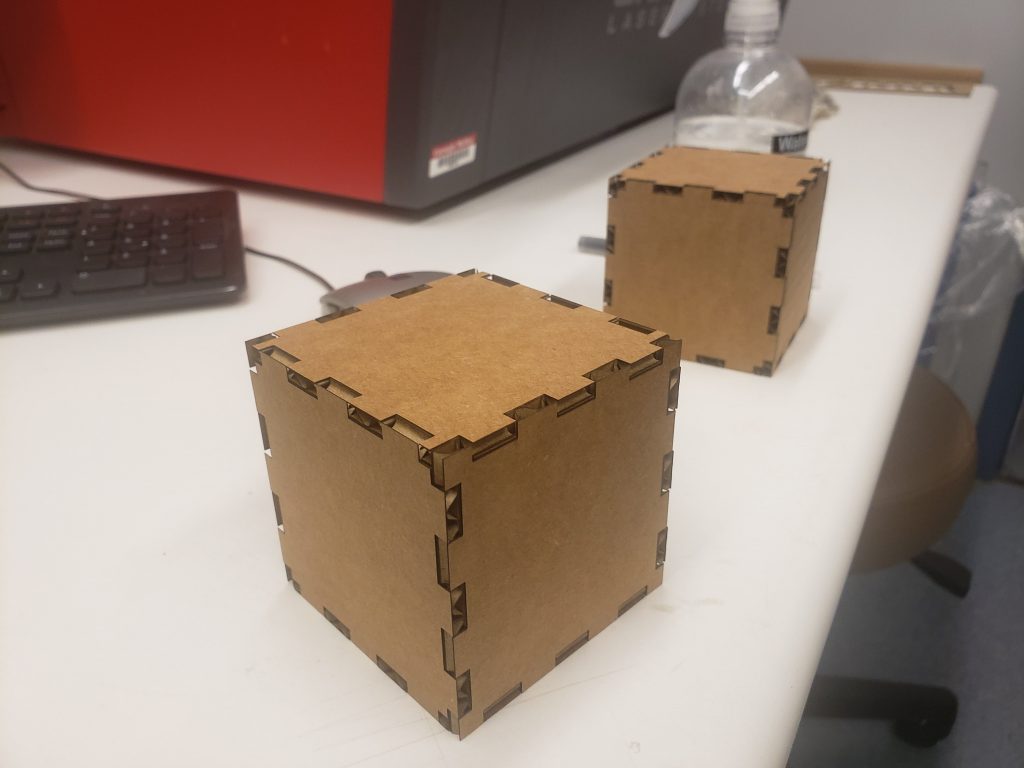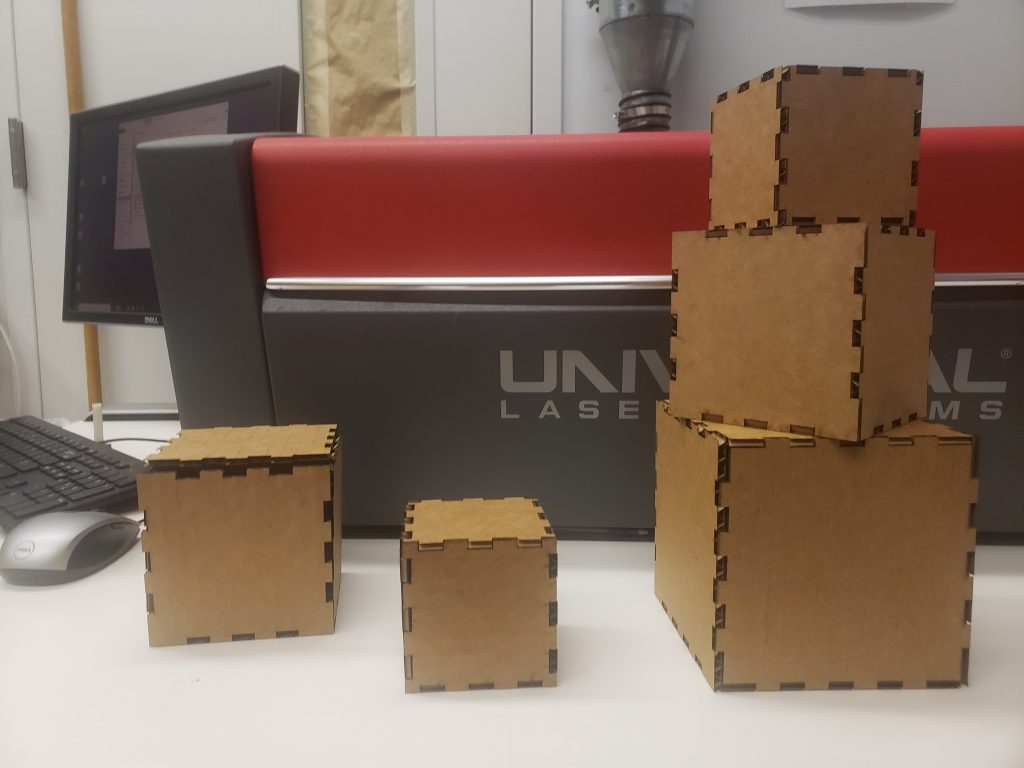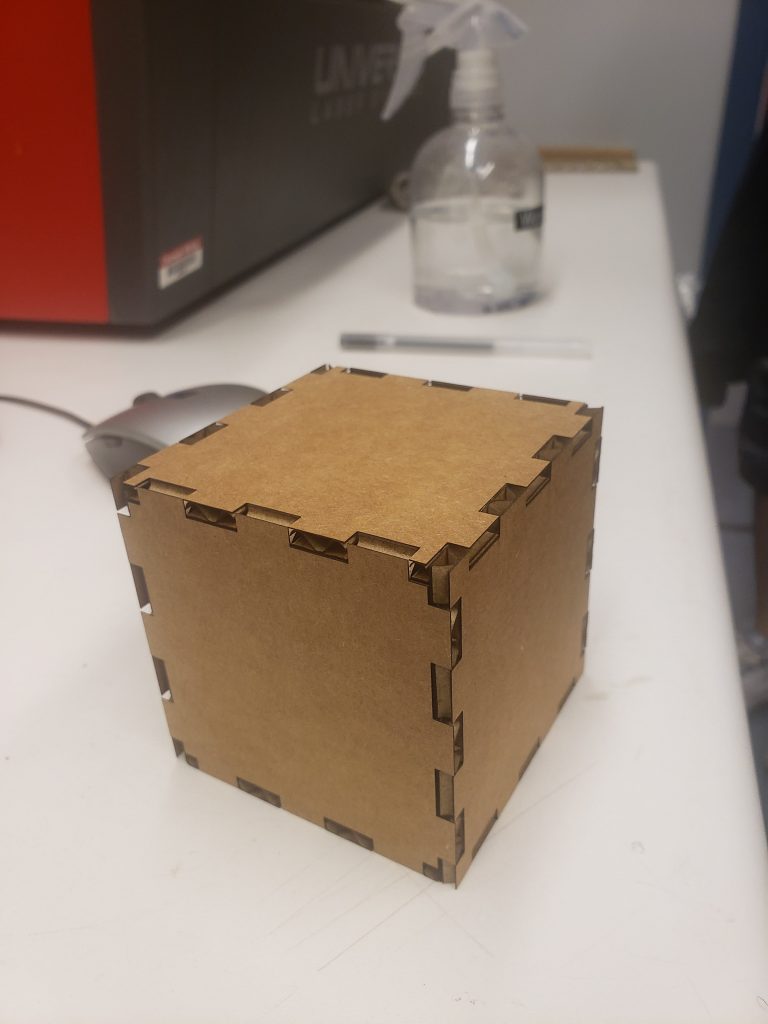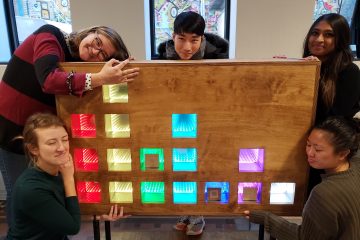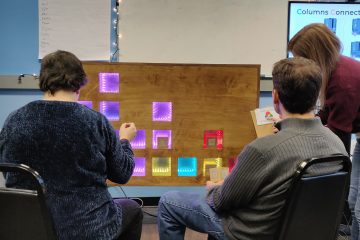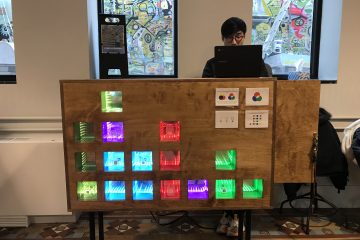Week 2
We kicked off this week getting our prototyping plan off the ground. We split up responsibilities:
- Wei + Marissa worked on logo/branding assets for our team
- Nidhi did research on the hardware for our sensory cubes
- Daryl + Marissa worked on fabrication of cubes
- Emily worked on scheduling meetings with faculty, playtesters, and putting in the order for all of our equipment
On Monday, Daryl and Marissa laser cut assembled cardboard boxes to begin testing out sizes and creating cardboard prototypes for playtesting. The boxes were really easy to make and really satisfying to put together! When people stopped by our room, they were really drawn to playing with them (which bodes well…).
On Wednesday, we went to the MuseumLab with our whole team and Chris. As Chris and Nidhi are new to our project, they had yet to see the space. The space had changed greatly from our last visit in the spring. But we were excited to be there (see team photo)!
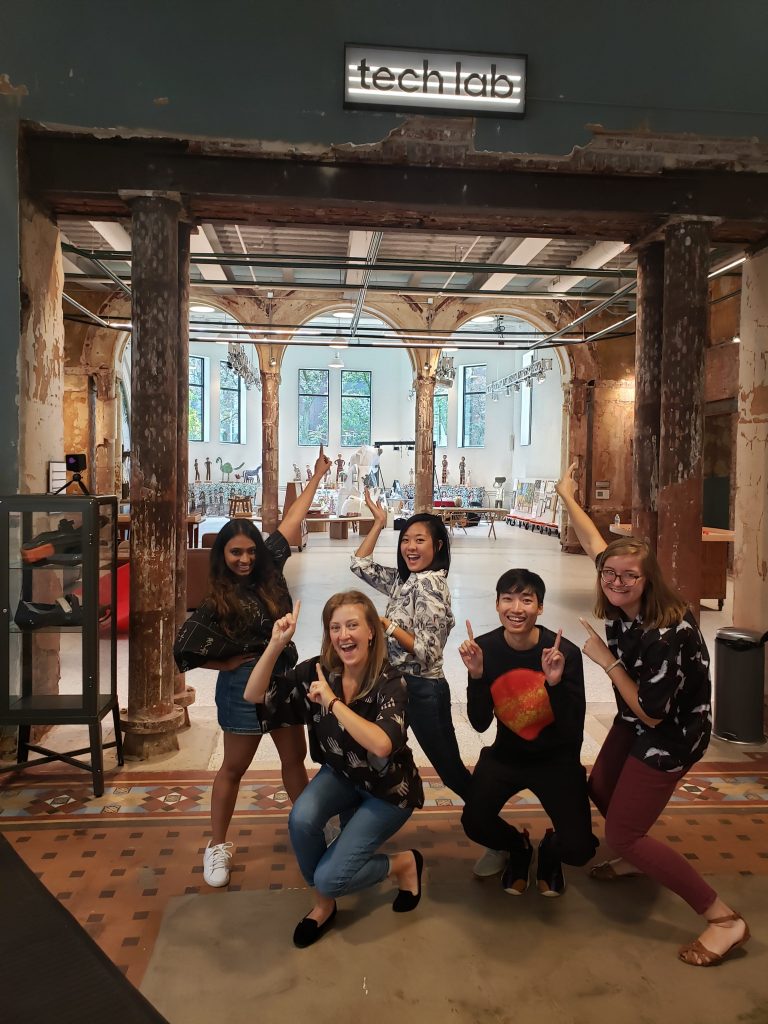
Wardrobe graciously provided by our most stylish team mate, Wei.
We discussed with Rebecca Grabman, ETC Alum and MAKESHOP Manager our sensory blocks concept. She was excited about the potential of the idea and about the possibility for students to also be able to create the blocks themselves in the MAKE Lab. She also discussed the possibility of us installing our piece in another part of the MuseumLab. This is good to know that we are not constrained to the Tech Lab space.
We clarified our relationship with the MuseumLab. They will serve as our subject matter experts instead of our clients, helping to guide our design process. As well as serve as a location for us to fabricate. We’ll share tools and resources along the way. We imagine that as we begin to fabricate, we can have designated times in the MuseumLab to build and interact with students in the space. This will allow us to interact with the community that we are designing for. We also began to share our connections and start conversations about setting up regular playtesting at the MuseumLab.
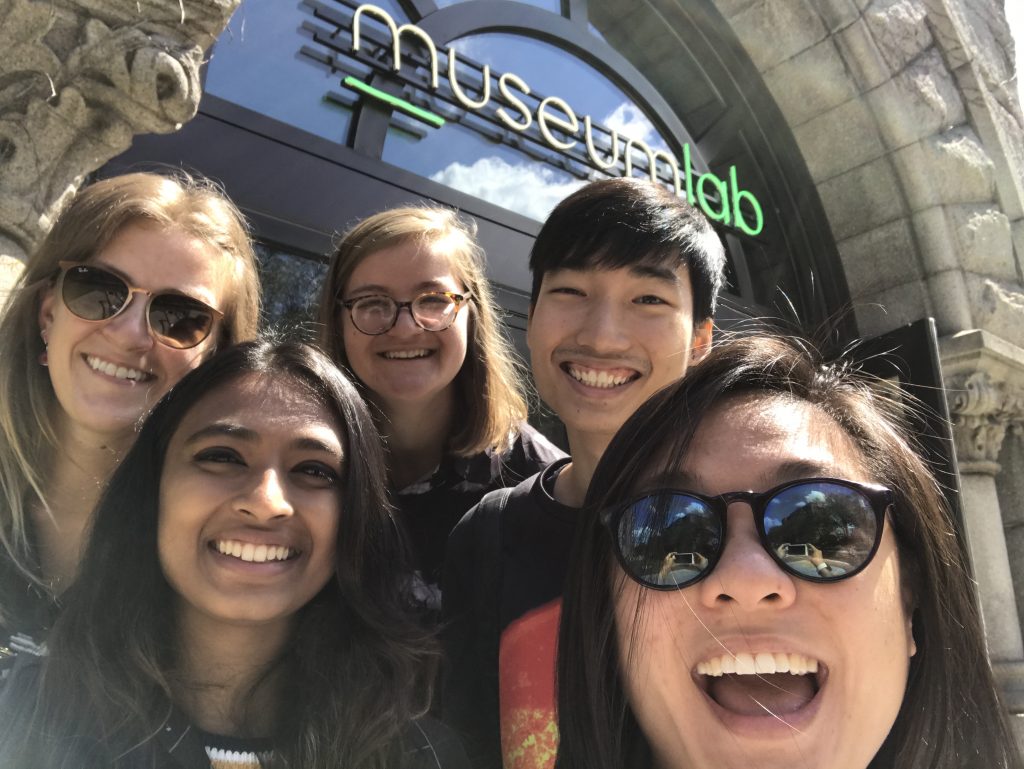
We met with Mo and Ruth this week to review our ideas with them, as they are both have extensive experience building interactive installations. Their biggest concern was complexity of interactions and power sources for all the cubes.
In Nidhi’s hardware research, we began to realize that our idea was more complicated than it seemed. For each sensory block, we would need an Arduino, battery, sensor, and LED lights. While in theory each was easy to construct, we had not considered how much power the whole system needed to function.
In speaking with the MuseumLab, it is preferable that our installation does not require facilitation, and we can not expect that the staff will charge the cubes every night. We considered wireless charging, but after meeting with Ruth, we realized that the technology is not there yet.
At the end of this week, we realized that the Sensory Blocks idea may not be feasible if we can’t figure out how to power all of the cubes. We began to brainstorm alternative ideas that still fulfill the core components of this experience and revisit our previous ideas.
While it was not ideal to run into this road block and start brainstorming again, it was better that we fail fast and prepare for the worst rather than continue prototyping an idea that is not suitable for our client.
But we ended our week on a high note, spending time together and bonding with a team dinner at Umami!
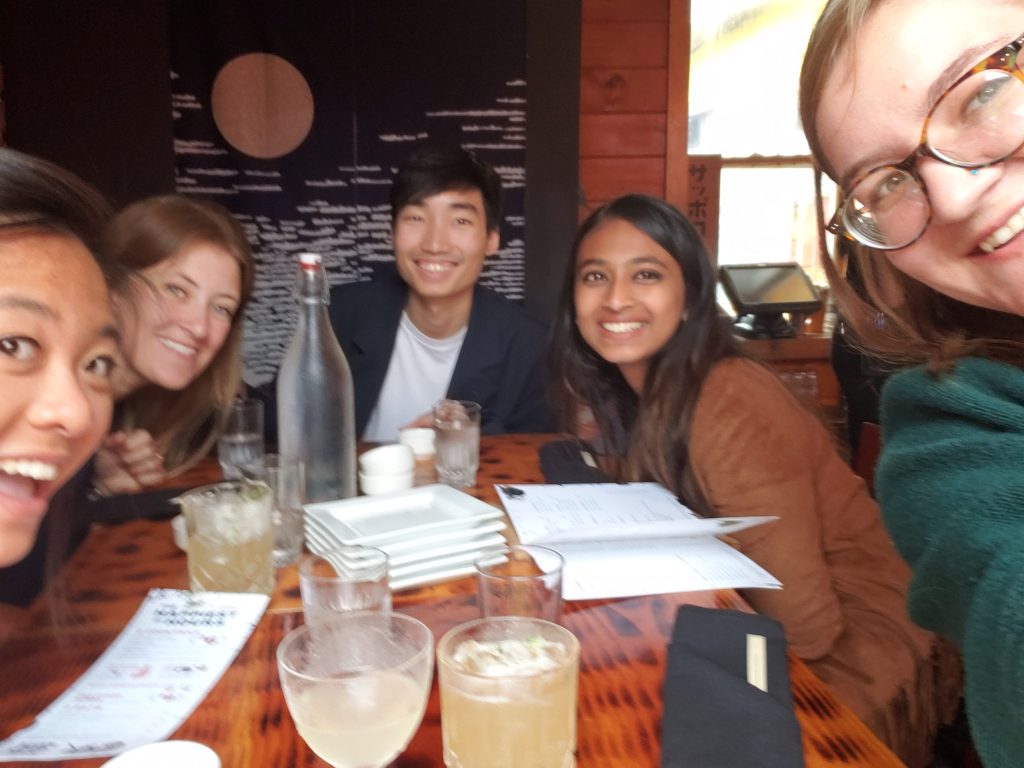
Next week, we will:
- Have ordered materials for prototyping
- Research further into powering our sensory blocks
- Concurrently, brainstorm alternative ideas and re-pitch to our faculty
